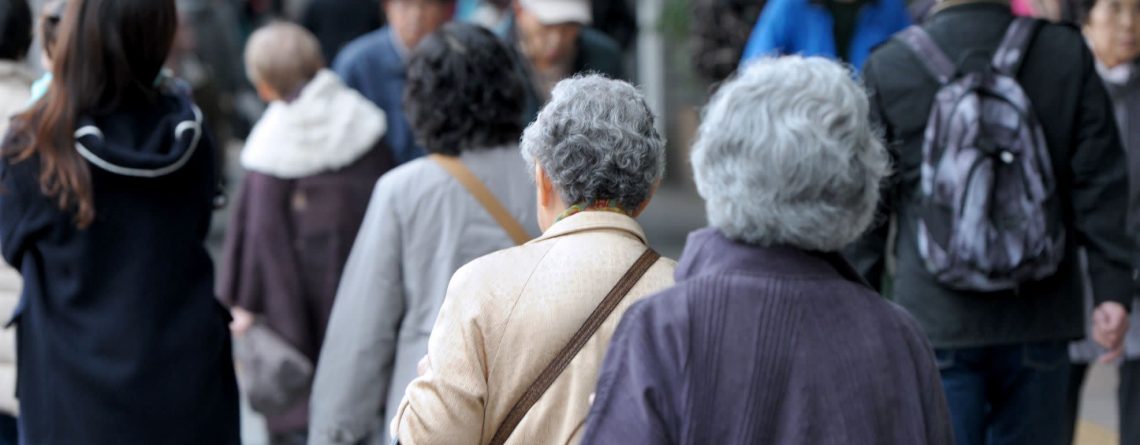COVID-19 – an ageing world makes it harder to fight pandemics
By Andrew Scott
The global fight against COVID-19 has triggered a surge of interest in the 1918 to 1920 influenza pandemic that killed more than 50 million people around the world.
But while we can learn lessons from the past, we must recognise what is different this time and tailor our response accordingly.
Read also US. How The Pandemic Is Making The Retirement Crisis Worse — And What To Do About It
Above all, society is ageing. In 2018, for the first time in history, the world had more people aged over 65 than under five.
IMPACT OF BEING OLDER
Whereas just over 2.5 per cent of the US population was over 70 in 1920, that share is now more than 10 per cent. This shift has major implications for how the coronavirus spreads, how many people will die, and how we should respond to this and future pandemics.
Consider the number of expected COVID-19 fatalities in the United States.
One recent high-profile study concluded that, absent policy changes in the US, the coronavirus would lead to 2.2 million deaths. But if today’s US population was the same size, and with the younger age structure of 1920, that number is reduced to 740,000.
That difference highlights the potential greater gains today from social-distancing measures to combat COVID-19, further justifying the approach even if it results in heavy economic losses.
When the US government evaluates environmental or public-transport safety measures, it uses the concept of the value of a statistical life (VSL) to gauge cost-effectiveness.
LONGER SOCIAL DISTANCING
Taking this approach, Michael Greenstone and Vishan Nigam of the University of Chicago calculate that social-distancing measures which save the lives of 1.7 million Americans are worth US$7.9 trillion, or 37 per cent of US GDP – outweighing even Great Depression-size declines in the economy.
These numbers reflect the ageing of US society. Using the 1920 age distribution, the gains from social distancing would be less than half as large; so, any lockdown would be less than half as long.
Even using the US population’s age structure from 1970 would yield gains of only US$5.7 trillion. From an economic perspective, therefore, the ageing of society over the last 50 years warrants a 40 per cent longer period of social distancing.
The issue is not just the growing elderly population, but also the fact that people are living longer. That makes it more valuable to save lives at all ages, because more people have more years ahead of them.
The VSL for an American in their 60s has risen by US$2 million compared to 1933 mortality rates, and by more than US$1.25 million compared to 1970.
Even those in their 80s have experienced an increase in life expectancy over this period valued at more than US$300,000 compared to 1933, and at more than US$150,000 since 1970. These longevity gains further increase the benefits of social distancing and the acceptability of associated economic losses.
GENERATIONAL DEBATE
Moreover, these gains are set to increase further in the decades ahead. By 2050, more than 17 per cent of the US population will be over 70 – boosting the economic value of social distancing to US$9.5 trillion, or 44 per cent of today’s US GDP.
Population ageing also has important implications for who reaps the benefits of social distancing. Based on the 1920 US age structure, only 22 per cent of the gains would flow to those over 70 years old.
Today, however, that share is just over one-third, and will rise to nearly one-half by 2050. And with labour-market layoffs disproportionately affecting the young, COVID-19 is starting to fuel a political debate pitting generations against one another.
But attempts to spark intergenerational conflict are exaggerated, for several reasons. For starters, the young and the old are part of the same families, and often the same households. Many of the countries that have been most severely hit by the pandemic, such as Italy, have been affected precisely because of their high levels of intergenerational mixing.
Furthermore, the young eventually become old. In fact, the chances of that happening are now much greater than ever before.
Back in 1920, a 20-year-old in the US had only a 50 per cent chance of living to 70, compared to an 80 per cent chance today.
Young people today should therefore be much more interested than their predecessors a century ago in how society looks after the health of the elderly during a once-in-50-years pandemic.
That doesn’t mean policymakers should ignore intergenerational issues. Ensuring targeted support for the young both now and after the pandemic is essential, especially in the case of college graduates entering the labour market.
INVESTING IN THE FUTURE
One way to do this is by giving priority to younger workers as social-distancing measures are gradually eased. Given that more than 10 million US workers are aged over 65, such a phased approach would minimize both the economic and public-health costs of such a policy.
As societies continue to age in the coming decades, we also need to invest in the future differently.
Read More @Channel News Asia











